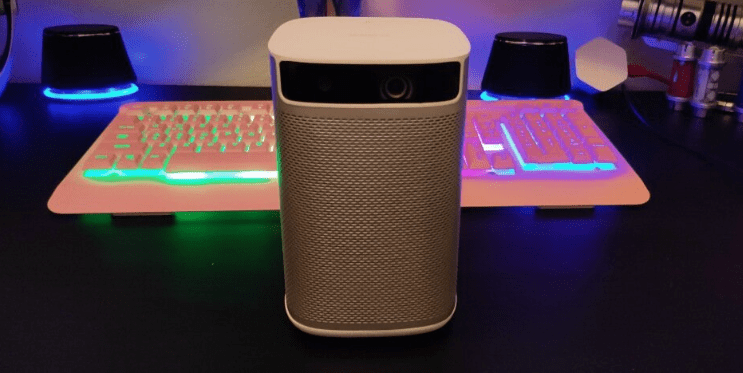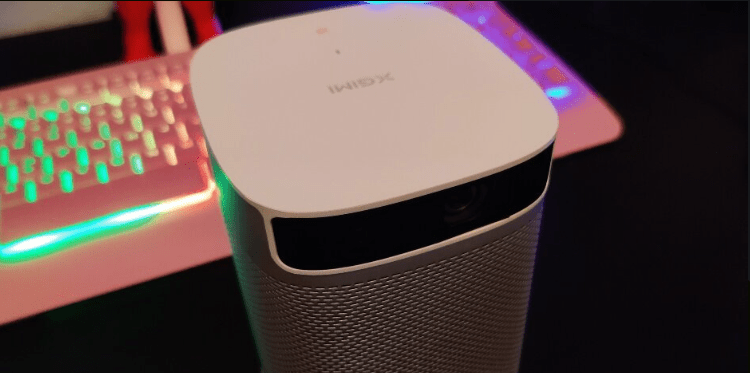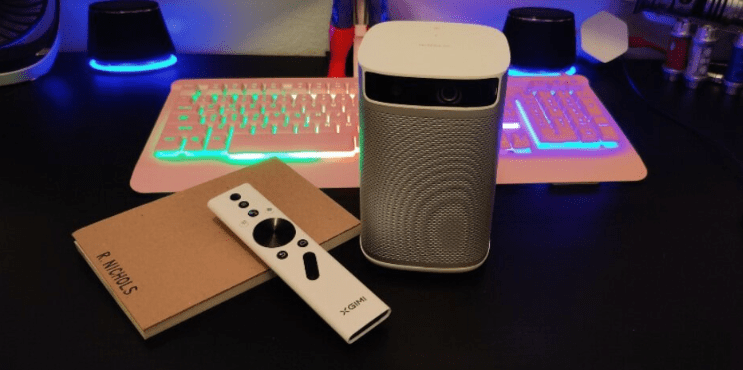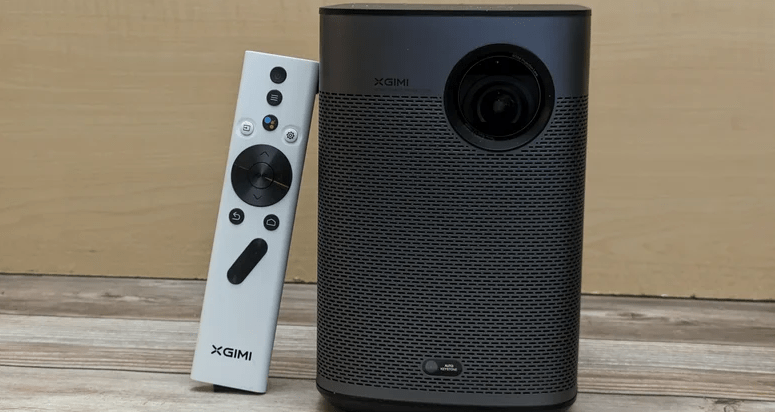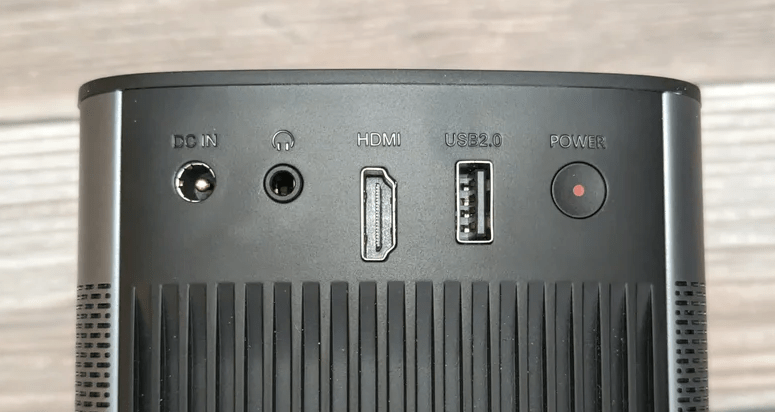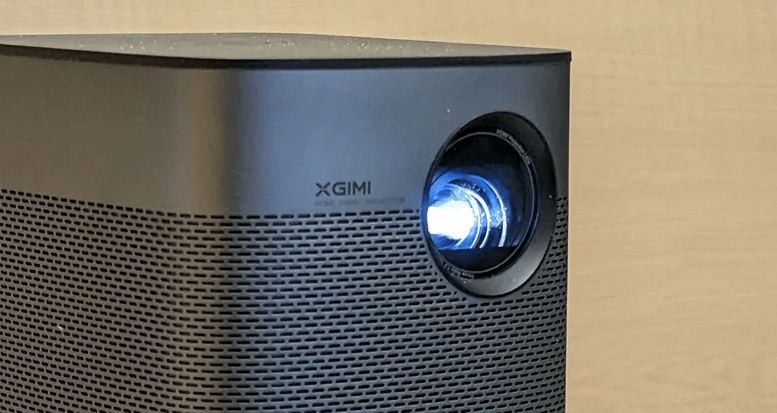At gagadget.com, your trust is our priority. We follow strict quality standards in our research, tests, and analysis of video projectors, to give you the best experience. Learn more
XGIMI MoGo Pro vs Halo Plus
Hey everyone! Today, I'm comparing two popular portable projectors from XGIMI: the MoGo Pro and the newer Halo+. Both models offer 1080p resolution, built-in batteries, Android TV smarts, and auto setup features in ultra-compact designs. But there are some key differences in brightness, sound quality, and gaming performance that could make one a better fit for your on-the-go viewing needs.
I've spent hands-on time with the MoGo Pro and Halo+, evaluating picture quality, ease of use, battery life, and overall value. In this in-depth XGIMI MoGo Pro vs Halo+ comparison, I'll highlight where each projector excels and help you decide which one to grab for your next big screen adventure. Let's dive in!
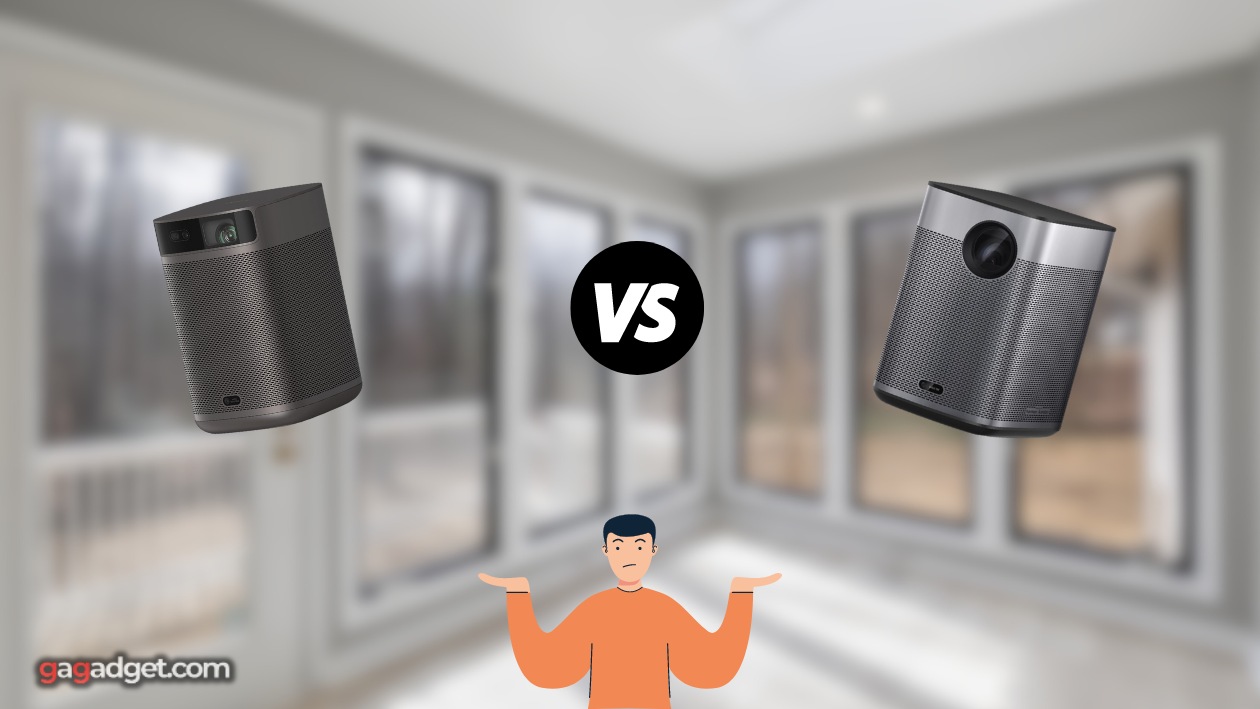
XGIMI MoGo Pro vs Halo+: Quick Overview
Here are the high-level takeaways if you're short on time: The XGIMI MoGo Pro and Halo+ are very similar portable projectors overall. Both feature native 1920 x 1080 resolution, a built-in battery, Android TV interface, autofocus, and auto keystone in highly compact designs. The main differences are brightness, battery life, and audio quality. The newer Halo+ is noticeably brighter at 900 ANSI lumens versus the MoGo Pro's 300 lumens. But the MoGo Pro's battery lasts up to 4 hours compared to the Halo+'s 2 hours. The Halo+ also has more powerful speakers and adds HDR support.
I recommend the XGIMI Halo+ for most buyers. The significantly higher brightness makes a real difference for lights-on viewing flexibility, outdoor use, and larger screen sizes. And extras like HDR, an enhanced Game Mode, and superior Harman Kardon sound add to the all-in-one appeal. But if you prioritize battery life over lumens, or just want to save a bit of cash, the MoGo Pro remains a very capable and portable option.
Table of Contents
- XGIMI MoGo Pro vs Halo+: Full Comparison
- Halo+ vs MoGo Pro: Design
- XGIMI MoGo Pro or Halo+: Owner Reviews
- XGIMI MoGo Pro and Halo+ Alternatives
- Should You Buy the XGIMI MoGo Pro or Halo+?
XGIMI MoGo Pro vs Halo+: Full Comparison
| Specs | XGIMI MoGo Pro | XGIMI Halo+ |
| Image |
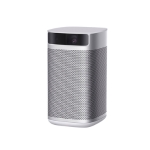
|
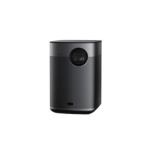
|
| Resolution | 1920 x 1080 (Full HD) | 1920 x 1080 (Full HD) |
| Brightness (ANSI Lumens) | 300 | 900 |
| Display Technology | DLP x1 | DLP x1 |
| Light Source | LED | LED |
| Light Source Life | 30,000 hours | 30,000 hours |
| Throw Ratio | 1.20:1 | 1.20:1 |
| Zoom | No | No |
| Image Size | 30" - 100" | 40" - 200" |
| Integrated Battery | Yes (4 hours) | Yes (2 hours) |
| Speakers | 2 x 3W Harman Kardon | 2 x 5W Harman Kardon |
| HDR | No | Yes |
| Smart TV | Android TV 9.0 | Android TV 10.0 |
| Dimensions (W x D x H) | 4.1" x 5.9" x 5.9" | 4.5" x 5.7" x 6.6" |
| Weight | 1.98 lbs | 3.52 lbs |
| Release Year | 2019 | 2021 |
Starting with picture quality, the XGIMI Halo+ easily bests the MoGo Pro in brightness. At 900 ANSI lumens, it's 3x as bright as the 300 lumen MoGo Pro - a substantial difference for portable projection. In my testing, the Halo+ was able to maintain a watchable 100" image with moderate ambient light, while the MoGo Pro needed a darker space to look its best. For backyard movie nights or office presentations, those extra lumens are key.
The Halo+ also adds HDR support, though it's frankly a subtle improvement on projection of this size. It can accept and tone map HDR10 signals for a welcome boost in dynamic range. But don't expect OLED TV levels of contrast and pop. The MoGo Pro tops out at SDR, which is fine for most content but lacks that extra HDR punch.
Both projectors feature the same native 1920 x 1080 resolution though, so sharpness and detail are virtually identical. Text is crisp down to small font sizes and HD video looks properly detailed without obvious pixel structure - impressive given the compact optics. I also observed similar color performance, with reasonably wide gamuts and natural skin tones. Neither is reference-grade but both are more than acceptable for on-the-go viewing.
Ease of setup is fantastic on both models. The automatic focus and keystone correction quickly squared the image to my screen and held it in sharp focus. The Halo+ was a touch faster and more consistent in my experience - likely due to the newer components and algorithms. But either projector will have you watching in well under a minute from startup.
Audio is another win for the Halo+. The dual 5W Harman Kardon speakers are loud and clear, if still a bit thin compared to a proper soundbar. But dialogue is easily understandable and there's a hint of bass. The MoGo Pro's 2 x 3W speakers are fine for a quick video but definitely benefit from external audio for movies or music.
Where the MoGo Pro strikes back is battery life. I consistently got close to the rated 4 hours of playtime on a charge, even at maximum brightness. That's enough for two average-length movies, a sporting event, or an afternoon of gaming without worrying about plugging in. The Halo+ managed closer to 2 hours in my testing. Still respectable but requires more frequent pit stops.
Finally, the Android TV experience is nearly identical on both projectors. You get the full suite of streaming apps, a clean launcher, and direct access to the Google Assistant for voice control. The Halo+ runs a slightly newer version of the OS for snappier navigation but the core functionality is the same. You can also cast content directly from your phone or tablet over Wi-Fi. Just add a reliable internet connection and you're set.
Halo+ vs MoGo Pro: Design
The XGIMI MoGo Pro and Halo+ share a similar minimalist rectangular design language but differ in size and layout.
XGIMI MoGo Pro Design
XGIMI Halo+ Design
The Halo+ is a bit larger and heavier at 4.5 x 5.7 x 6.6 inches and 3.5 pounds versus the MoGo Pro at 4.1 x 5.9 x 5.9 inches and 2 pounds. Neither will strain your backpack but the MoGo Pro is definitely more pocket-friendly for travel. The Halo+ also has a more industrial look with its perforated metal grille and prominent Harman Kardon branding.
Setup and access to the lens controls are nearly identical. Focus and keystone buttons flank the lens up top, while all your ports are on the back. Both include a single HDMI input, USB-A port, headphone jack, and DC power input. The Halo+ upgrades to an HDMI 2.0 port for higher bandwidth 4K signals. But since neither projector has native 4K, this is more future-proofing than necessity.
XGIMI MoGo Pro or Halo+: Owner Reviews
Let's see what actual buyers have to say about their experiences with the XGIMI MoGo Pro and Halo+ projectors:
XGIMI MoGo Pro Owner Reviews
Praises: "The battery life on this projector is insane - I can get through an entire Lord of the Rings extended edition on a single charge with juice to spare!"
"The smart features are so convenient. I love being able to pull up Netflix or YouTube straight from the Android TV home screen without fussing with my phone."
***
Drawbacks: "300 lumens is pretty dim, even in a totally dark room. I have to keep the screen size under 60 inches to maintain a bright enough picture."
"The built-in speakers are weak and tinny. Fine for a quick YouTube clip but for movies or shows, you'll want to connect some real speakers."
XGIMI Halo+ Owner Reviews
Praises: "I can't believe how bright this little projector is - it easily lights up my 100 inch screen, even with some lights on. Great for movie night with friends."
"The game mode is awesome! I've been playing Halo Infinite on my Xbox with virtually no lag. It's not as responsive as a high-end monitor but plenty good enough for casual gaming."
***
Drawbacks: "I really wish the battery lasted longer. 2 hours is enough for most movies but you'll need to plug in for binge watching or gaming sessions."
"The auto focus is a bit hit or miss for me. Sometimes it hunts back and forth before locking in. A manual focus option would be nice for fine-tuning."
XGIMI MoGo Pro owners rave about the stellar battery life and included Android TV features. The grab-and-go convenience is a huge selling point for impromptu movie nights, gaming sessions, and backyard gatherings. A few users wish for higher brightness and more impactful audio but are generally thrilled with the ultra-portable design.
Halo+ buyers can't stop gushing about the impressive brightness output and punchy built-in speakers. The responsive Game Mode and more premium build quality are also frequent highlights. The shorter battery life and sometimes finicky auto focus drew some complaints. But most agree the Halo+ delivers a killer portable viewing experience.
XGIMI MoGo Pro and Halo+ Alternatives
If you're not sold on either the XGIMI MoGo Pro or Halo+, here are a couple other strong portable projector options:
- ViewSonic M2: A 1080p DLP model with 1,200 LED lumens, a 3 hour battery, USB-C, autofocus and keystone, and Harman Kardon speakers in an ultra-slim design;
- Anker Nebula Solar Portable: Another 1080p option with 400 ANSI lumens, HDR10, Android TV 9.0, a 3 hour battery, and auto setup features. Great for outdoor gatherings.
The ViewSonic M2 is a compelling MoGo Pro alternative with a brighter 1,200 LED lumen image, more modern USB-C input, and sleeker design. It can't match the MoGo Pro's 4 hour battery but adds a microSD card slot for internal media playback. The speakers and color performance are also very comparable.
In the sub-$1000 range, the Anker Nebula Solar is a strong Halo+ competitor. It packs similar 1080p resolution, HDR10 support, Android TV smarts, and auto setup convenience into an even more compact form factor. The 400 lumen output is dimmer than the Halo+ but the 3 hour battery lasts a bit longer. A great choice for those prioritizing portability over brightness.
Should You Buy the XGIMI MoGo Pro or Halo+?
After thorough hands-on testing, it's clear the XGIMI MoGo Pro and Halo+ represent the cream of the battery-powered projector crop. With native 1080p resolution, solid color and contrast, Android TV streaming, and auto setup features, both deliver a big screen experience that's shockingly easy to enjoy anywhere. From backyard movie nights to office presentations to on-the-go gaming, they open up a world of jumbo viewing possibilities far beyond your average TV.
For most buyers, I recommend springing for the XGIMI Halo+. The huge brightness advantage makes it much more flexible and user-friendly in non-ideal environments. Afternoons with the blinds open? Check. Impromptu patio party? You're covered. Mega 150"+ screen sizes? No sweat. Coupled with the impressive speakers, lower input lag, HDR support, and more modern design, it's the clear winner for portable projection.
That said, the MoGo Pro remains a fantastic option for those who prize battery life and portability over all else. The 4 hour runtime is a real boon for activities like car camping, long flights, or back-to-back movies without an outlet. And while not as bright or feature-rich as the Halo+, it still delivers a crisp 1080p picture with the same smart TV convenience in an even more pocket-friendly package. If you mostly watch in dim to dark spaces and want to save a little cash, it's a solid buy.
At the end of the day, you really can't go wrong with either projector for on-the-go entertainment. The XGIMI MoGo Pro and Halo+ both live up to the promise of big screen thrills virtually anywhere. From family movie nights under the stars to blowing away clients in the conference room to sneaking in some gaming at a buddy's house, they make jumbo viewing incredibly accessible and seamless. Just pop one in your bag, find a blank wall, and let the magic begin - no outlet hunting required!
That's a wrap on my XGIMI MoGo Pro vs Halo+ breakdown. Feel free to hit me with any other portable projector questions - I'm always happy to help my fellow road warriors maximize their viewing powers!
Go Deeper:
